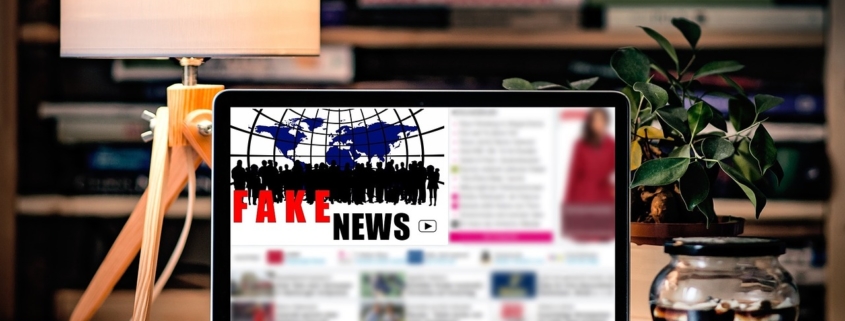The Ultimate Guide to Spotting Fake News
Do you know when something is “fake news?” If you have half a brain, you should. However, when someone in authority makes a claim, the masses who elected that person into that authoritative position, automatically trust what has been said and spread that fake news. That needs to stop. My mother one said believe nothing of what you hear and half of what you see. And today no matter what, don’t automatically believe what you read.
 There has been a lot of talk about fake news since the 2016 presidential election, and a lot of controversy from those who spread fake stories for the purpose of influencing hearts and minds and of course the outcome of the election. This is dangerous for dozens of reasons, many of which threaten our democracy and in many cases can lead to people getting killed which has happened many times this year.
There has been a lot of talk about fake news since the 2016 presidential election, and a lot of controversy from those who spread fake stories for the purpose of influencing hearts and minds and of course the outcome of the election. This is dangerous for dozens of reasons, many of which threaten our democracy and in many cases can lead to people getting killed which has happened many times this year.
Keep in mind that not all people who spread or start fake news stories are propagandists, some are thieves and even more are advertisers. Some people just want you to come to their website so they can get clicks and traffic. Advertisers use fake news, as a way to get more clicks. This isn’t really dangerous to you, but someone is getting money because you are clicking on their site.
Other people use fake news, too, including those who want to facilitate identity theft. There are fake news sites that you click on, and then when you visit the site, you get a virus. From there, a hacker can get access to your personal information including your logins and passwords, bank account information, or even your Social Security number.
Here are some things to look out for:
- Use common sense when looking at fake news stories. If it sounds too sensational, it probably is fake.
- If a story is an obvious parody, it’s also obviously a fake news story.
- If you already know some of the facts of the story, and something seems weird about the story you are reading, it’s very possible that the news is fake.
- Look at the URL where the story is found. If it looks strange, the story is likely fake. For example, if you see a URL ending with “.com.co,” it’s a website from Colombia.
- If there is a photo and the photo looks fake, the story is likely fake, too. But, this isn’t always the case.
- Don’t just automatically trust.
- The main stream media has been vilified over the past four years. And while their news is often “biased”, it’s not fake. It’s based on fact, but again those facts may be slanted in favor of the readership. Fake and biased are definitely not the same thing.
Look Closer at the Photos
Many fake news stories have photos that accompany them. Here’s how to test if a realistic photo is accompanying a fake news story.
- Take a screenshot of the photo, making sure to exclude any graphics that are not relevant.
- Open Google Images.
- Upload or drag the screen shot to the search area in Google Images.
- You will then see information about the “best guess” for the image. If the information doesn’t correlate to the story, you are probably reading a fake news story.
You can use this trick in other ways, too. For instance, if you do online dating, you can see if the person you are talking to is actually who they say they are. If not, they are a faker.
Additionally, you can do this with any image that you have. If the Google Image search gives you information that doesn’t correlate with what you think it does, it is likely a scam. Keep in mind that crooks like identity thieves often steal images and use them as their own.
When you are in doubt, it is always best to do a search on the item to see if other news sources are reporting on it, too. If the only place the story is seen is on a no-name site, you should suspect that it’s fake. If it’s not also being reported by the New York Times or Wall Street Journal, it’s probably fake.
ROBERT SICILIANO CSP, is a #1 Best Selling Amazon author, CEO of CreditParent.com, the architect of the CSI Protection certification; a Cyber Social and Identity and Personal Protection security awareness training program.


























